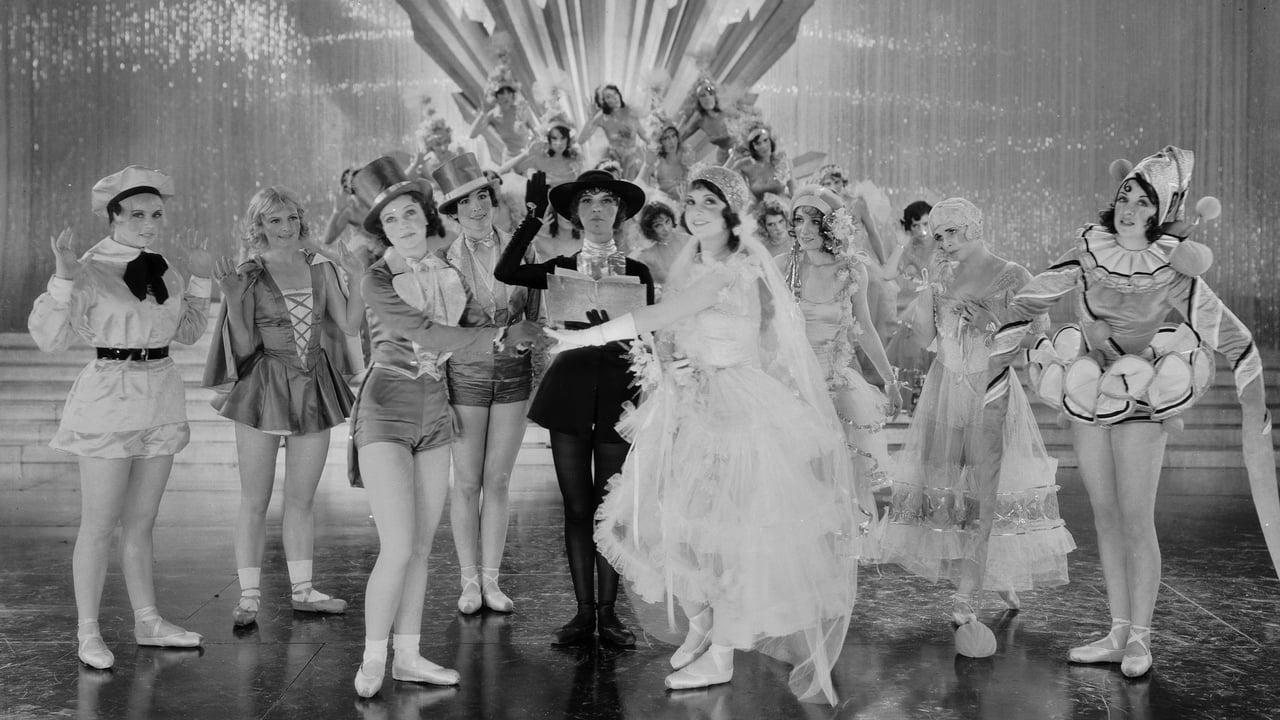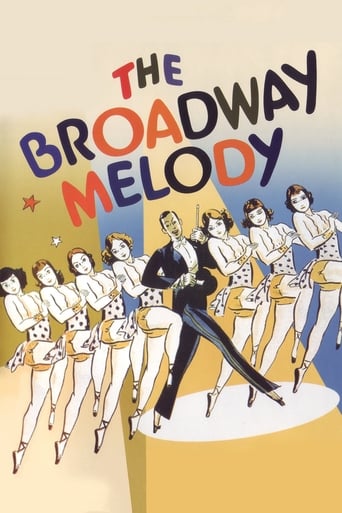

NOTES: Re-made (in a considerably cleaned-up version) by MGM in 1940 as "Two Girls On Broadway: with Lana Turner, Joan Blondell and George Murphy.COMMENT: Bessie Love brings Hank to vibrant life. This was her only acting nomination in a screen career that started with a bit part in "The Birth of a Nation" (1915) and continued right through to 1983. It takes talent indeed to so effectively portray a feisty vaudeville artist with such a grossly exaggerated opinion of her own ability. When the Ziegfeld-like character peremptorily decides to cut her number, our sympathies are all with him. He's dead right. Her act might go over okay in Hicksville, but on Broadway it signally lacks class, style and even a touch of elementary pizazz. Yes, Bessie's is a brilliant performance indeed, requiring just the right balance between aspiration and actuality. Although superbly calculated, her go-getting Hank almost always seems too natural and true-to-life. It's only when she breaks down and tearfully erases the make-up that artifice appears to get in the way. Oddly, this was the only scene that NYT critic Mordaunt Hall liked. That's sure a good example not only of the way acting styles change but of the way they impact upon and engage an audience. My daughter won't watch any movies made before 1935. She doesn't like the acting. "People don't talk like that in real life!" she claims. That's very true. But it also happens to be equally true of today's movies and television. The acting styles are totally different, yes. But our friends and neighbors still don't talk that movie way in real life. We just imagine they do!Anita Page, Hollywood's reigning love goddess of 1929 (only Greta Garbo received more fan mail), remains an unqualified delight. She looks the part, she acts the part, and even her scratchy, uncultured voice is just perfect. Like Miss Love, she was unable to capitalize on her role. You can no more make a career portraying beautiful, untalented showgirls than you can feisty, untalented hoofers. Miss Page retired from films in 1936. Sixty years later, however, she made a comeback, appearing in Sunset after Dark (1996), The Crawling Brain (2002), and Bob's Night Out (2004).Oddly, the one genuine vaudeville talent in our star trio, Charles King, (he of the ingratiating voice and charismatic manner), had the shortest Hollywood career of all. He made his debut in this film, then joined Marion Davies in Metro-Goldwyn-Mayer's disastrous "Five O'clock Girl" which executive producer William Randolph Hearst halted and scrapped when he didn't like the rushes. A bad omen. King never repeated his success in Broadway Melody. He played himself in a brief appearance in The Hollywood Revue (1929), then starred in Climbing the Golden Stairs, Chasing Rainbows, Remote Control, Oh Sailor Behave (all 1930) and Ladies Not Allowed (1932). And that was it. Seven films. Count them. He died in 1944. To add insult to injury, King's film credits are often confused with those of that delightfully moronic, stiff-as-a-board, cult western heavy, Charles King, whose legendary incompetence has charmed generations of fans (including me).Director Harry Beaumont, a veteran of the silents, managed the transition to sound with elegance and style whilst most of his contemporaries were floundering. Yet in a few short years, his career was virtually over (though he continued making the odd "B" movie now and then right up to 1947).Studio head Louis B. Mayer was determined not to be outdone or outshone by any other studio. If audiences wanted the novelty of sound, M-G-M was going to sock it to them in truck-loads. And, wow! What a track! Whilst the visuals are not always as innovative, catchy or emotionally rousing as the sound, oddly the only real visual disappointment lies in the Technicolor insert, "The Wedding of the Painted Doll". Miles removed from a Busby Berkeley number, the choreography is too static to garner much audience interest, especially in current prints where the number is disappointingly presented in washed-out black-and-white. DVD available through Warner Home Video. Quality rating: 9 out of ten.
... View MoreThe first talkie to win Best Picture at the Academy Awards has an oft-used plot - people try to become famous amid complications - but it's not a bad movie. I'm not a fan of musicals, and many things about "The Broadway Melody" come across as dated. I guess that one has to try and imagine watching the movie when it first got released. It got released before the Hays Code got established, so some of the scenes look a bit risqué for the era (it even feels silly to write that sentence in an era when one can simply look for porn on the internet). The movie's a mildly fun look at 1920s music.* Most notably, the movie ushered in decades of musicals. Some of the musicals are among the most irritating movies.Anyway, this movie's okay just as long as you don't interpret it as the most serious type of movie. Accept it as plain old entertainment and you'll probably like it. As for me, my favorite movies from old Hollywood are gangster movies, horror movies, and slapstick comedies (especially the Looney Tunes cartoons).*Nowadays, probably the most famous 1920s song is "Midnight, the Stars and You", which featured prominently in "The Shining".
... View MoreThis 1929 Harry Beaumont-directed movie won an Oscar for Best Picture at the 1928-29 Oscar ceremonies. It features the songs by Nacio Herb Brown (composer) and Arthur Freed (Lyrics) and they both have small parts in the movie. This is a fairly entertaining movie, considering the time in which it was made. I wonder if this was the first MGM sound movie about putting on a Broadway show? (The IMDb cast list is rather skimpy in that it doesn't tell us more about who played which role. For example, I would like to know who played the stuttering uncle. He was sort of entertaining and should have been listed in the cast.) Charles King (Eddie Kearns), Anita Page (Queenie Mahoney), and Bessie Love (Hank Mahoney) steal the show as a boyfriend and two sisters from out of town. The theater owner's name was Francis Zanfield (Eddie Kane), and one wonders if this isn't a takeoff on the name, Florenz Ziegfeld. (Well, I probably just answered my own question there!!) The story, itself, is rather thin, but the entertainment is good. One thing it presents, that I had never seen before or since, is a woman tap dancing on her toes in ballet slippers. To me, this was really quite a remarkable feat on some really remarkable feet!!
... View MoreThe following are lyrics by Arthur Freed - A million lights they flicker there - A million hearts beat quicker there - No skies of gray on the Great White Way - That's the Broadway Melody.Released in 1929 - The Broadway Melody is a somewhat difficult movie to review since one feels that with every comment they must be reminding the readers that this was one of the very first all-sound pictures to come out of Hollywood.Set against the backstage hubbub of an elaborate Broadway musical revue that's being financed by big-shot, Frank Zanfield, The Broadway Melody's all-too-familiar plot revolves around the romances, the heartaches, and the struggles of certain prominent cast members who are appearing in the show.I found that far too often it became quite clear that the technicians behind the cameras and sound equipment didn't have a full grasp of what to do with this new medium - And, as a result, a number of the scenes came across as being noticeably clunky, disjointed and overlong.It's interesting to note that this film (now 85 years old) predates the Hayes Code, which placed strong restrictions on what could and could not be seen (or heard) in movies.This film does not contain any nudity, but there were a number of scenes where 2 of the female characters were shown in various states of undress, including shots of them parading around indoors in just their undergarments.Even though The Broadway Melody wasn't a particularly good picture, it was interesting to view it in the context of its significance and value in the history of early movie-making.*Trivia note* - Back in 1929 movies generally had 35-cent admission prices. With that in mind - This film grossed nearly $4 million upon its initial release.
... View More